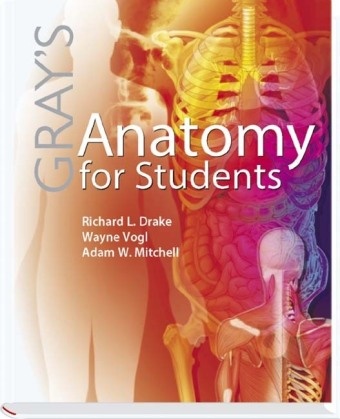Read more
Chapter 1. Introduction Why this book? How to use this book The Basics: The Anatomical Plane . Body Planes (Sagittal, Coronal, Transverse (horizontal)) . Terms of Position (medial, lateral, superior, inferior, anterior, posterior) . Concept of superficial and deep - relative and absolute . Terms defining movement (flex, extend, abduct, adduct, etc) . Basic Body Plan (tubular and segmented) . Compartmentatation . Body Regions Chapter 2. Back Conceptual Overview: General description . Functions . Component parts . Relationship to other regions . Key features Regional Anatomy: Bones . Major ligaments . Muscles . Important vessels . Organization of nervous system Surface Anatomy: C7 spine . C6 spine . Scapula . Erector spinae mass . Trapezius . Latissimus dorsi . Rhomboid muscle mass Clinical Correlations: Lumbar taps . Disc herniation . Anesthesia . Whiplash Chapter 3. Thorax Conceptual Overview: General description . Functions . Component parts . Relationship to other regions . Key features Regional Anatomy:Thoracic walls and boundaries . Thoracic viscera and other contents . Heart, great vessels, vasculature . Esophagus . Thymus . Nerves of the thorax . Mediastinum Surface Anatomy: Vertebral Level T4/5 . Left brachiocephalic . Hemiazygos system . Heart projection . Projection of valves/positioning of stethoscope for valve sounds . Pleural projections (lobes) . Costodiaphragmatic recesses/ inserting chest tubes Clinical Correlations Thoracic Wall: Rib abnormalities . Traumatic injuries: fractures ribs, flail chest, rib dislocation, rib separation . Sternal problems: bone marrow, incisions . Breast problems: cancer, mastectomy, lumpectomy Thoracic inlet syndrome Needle through intercostal space Herpes zoster Lungs: Pneumothorax . Pleuritis, pleural adhesions, hemothorax . Lung auscultation . Bronchopulmonary segments in disease . Pulmonary thromboembolism Cancer Heart: Atherosclerosis, coronary artery disease, angina, myocardial infarction, bypass surgery, pacemakers . Cardiomyopathies . Arrhythmias, conduction system diseases . Valve diseases, stenoses, prolapses, murmurs . Pericardial effusion, cardiac tamponade, pericardiocentesis . Infections, pericarditis . Congenital defects . Thrombi/emboli Mediastinum: Thymus tumors, appearance in infants (sail sign) . Coarctation of the aorta . Esophageal diseases, varices, gastroesophageal reflux, cancer . Aortic aneurysm . Lung cancer, metastases to nodes Chapter 4. Abdomen Conceptual Overview: General description . Functions . Component parts . Relationship to other regions . Key features Regional Anatomy: Walls, roof, and floor . Viscera . Vasculature . Innervation . Special structural relationships Surface Anatomy: Anterior abdominal quadrants . Umbilicus . Inguinal region . Posterior (lumbar landmarks) Clinical Correlations: Hernias . Ulcers . Neoplasia . Appendicitis . Bowel diseases . Liver diseases . Gallbladder and biliary tract diseases . Pancreatic diseases . Renal diseases and transplantation . Vascular diseases . Infectious and parasitic diseases . Congenital abnormalities and malrotations Chapter 5. Pelvis/Perineum Conceptual Overview: General description . Functions . Component parts . Relationship to other regions . Key features Regional Anatomy: Architectural framework of the pelvis and perineum . Bones . Major ligaments . Significant features of the pelvic structure . Muscles that complete the pelvic walls . Pelvic floor . Structural framework and definition of perineum . Pelvic viscera . Contents of the perineum . Nerves and arteries of the pelvis and perineum Surface Anatomy: Male perineum . Male urogenital triangle . Penis . Female perineum . Female urogenital triangle . Female and male perineum indicating dermatomes Clinical Correlations: Ectopic pregnancy . Examination of cervix . Prostatectomy and i...

